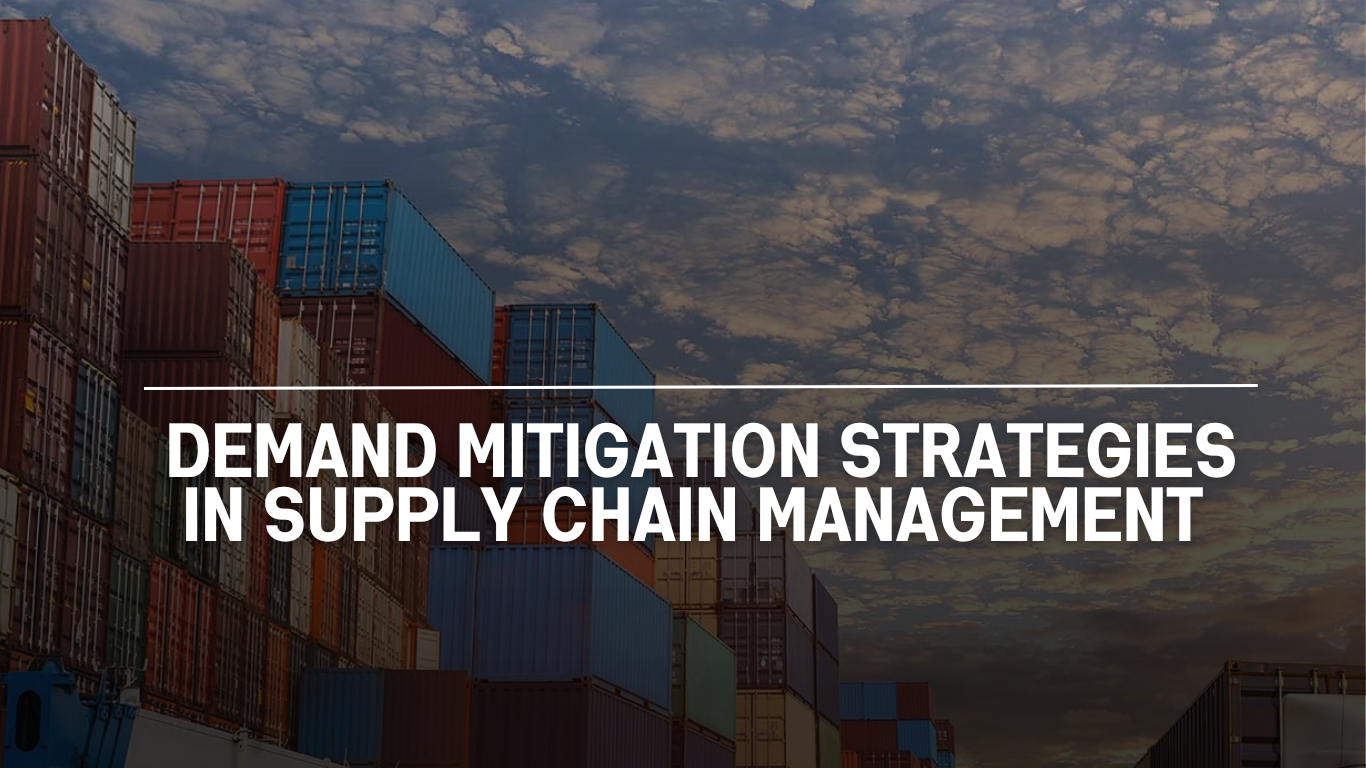

Effective demand mitigation strategies are vital for ensuring supply chain resilience and operational efficiency. These strategies enable businesses to manage demand fluctuations, avoid disruptions, and maintain customer satisfaction. Here are some key approaches to achieving effective demand mitigation in supply chain management:
1. Safety Stock Management:
Keeping a buffer of safety stock is a well-established method to cushion against unexpected demand spikes or supply chain delays. This extra inventory ensures that businesses can continue to meet customer requirements even when demand exceeds forecasts or supply chain interruptions occur.
2. Flexible Supply Chain Design:
Building flexibility into the supply chain is essential for adapting to changes in demand. This can include diversifying the supplier base, utilizing multiple transportation methods, and adopting adaptable manufacturing processes. A flexible supply chain can quickly adjust to demand changes, minimizing disruption risks.
3. Demand Shaping Techniques:
Proactively shaping demand through targeted marketing and promotional activities can help balance supply and demand. Implementing strategies like price adjustments, special promotions, and product bundling can influence customer buying patterns, smoothing out demand peaks and troughs.
4. Advanced Inventory Management:
Implementing efficient inventory management practices, such as Just-In-Time (JIT) inventory, Economic Order Quantity (EOQ), and ABC analysis, helps optimize inventory levels. These techniques reduce holding costs and ensure that stock is available when needed, aligning supply more closely with actual demand.
5. Utilizing Real-Time Data and Analytics:
Leveraging real-time data and analytics tools enables businesses to monitor demand trends and respond promptly to changes. Advanced analytics provide insights into sales patterns, inventory status, and market conditions, facilitating proactive demand management and decision-making.
6. Building Strong Supplier Relationships:
Developing reliable and responsive supplier partnerships is crucial for demand mitigation. Strong supplier relationships ensure consistent quality and timely delivery, and suppliers who can quickly adapt to changes in demand help mitigate the risk of supply chain disruptions.
In conclusion, effective demand mitigation strategies are crucial for maintaining a robust and efficient supply chain. By implementing these strategies, businesses can remain agile, reduce costs, and enhance customer satisfaction, ultimately leading to long-term success in a dynamic market environment.
Implementation of new Softwares in Supply Chain
In the ever-evolving business world, managing supply chains effectively is essential for staying competitive. The introduction of sophisticated software tools has been a game-changer in supply chain management, helping organizations refine their processes, cut costs, and enhance service quality. Here’s a look at the advantages of integrating software into supply chain management.
Boosting Visibility and Coordination:
Contemporary software tools for supply chain management, including Enterprise Resource Planning (ERP) systems and Supply Chain Management (SCM) platforms, provide an in-depth view of the entire supply chain. These platforms unify diverse functions—such as procurement, inventory control, and transportation—into a single, cohesive system. This integration allows for real-time visibility of goods, accurate demand forecasting, and effective coordination among different parties, which reduces delays and prevents interruptions.
Advancing Forecasting and Planning:
Cutting-edge software with advanced analytical capabilities and artificial intelligence (AI) is transforming how businesses forecast demand and plan supply chains. Predictive analytics software utilizes historical data and market trends to predict future demand with high precision. This foresight enables businesses to manage inventory efficiently, align production schedules, and address potential supply chain challenges proactively.
Streamlining Processes Through Automation:
One of the main benefits of modern supply chain software is process automation. Automated systems handle tasks related to order processing, inventory management, and logistics, significantly decreasing manual work, reducing errors, and increasing productivity. For example, automated reorder points maintain optimal inventory levels without continuous manual intervention, and robotic process automation (RPA) simplifies repetitive tasks.
Fostering Collaboration:
Effective collaboration is crucial for seamless supply chain operations. Software solutions facilitate improved communication between suppliers, manufacturers, distributors, and retailers. Cloud-based SCM platforms, for instance, support real-time information exchange and collaborative problem-solving, which can lead to better synchronization of operations and faster resolution of issues.
Enabling Data-Driven Decision Making:
Software tools enable organizations to make decisions based on detailed data insights. Business Intelligence (BI) platforms and dashboards offer valuable information on supply chain performance metrics, such as order fulfillment rates, supply chain expenses, and vendor efficiency. This data-driven approach helps managers uncover inefficiencies, anticipate trends, and make informed strategic decisions.
Supporting Compliance and Risk Management:
Supply chain management software also plays a role in ensuring regulatory compliance and managing risks. Compliance-focused tools monitor and manage regulatory requirements, while risk management features identify potential disruptions and develop strategies to mitigate them. This helps businesses stay compliant with legal standards and prepare for potential risks in the supply chain.
Conclusion
The adoption of software solutions in supply chain management marks a significant evolution in the field. By enhancing visibility, automating routine tasks, fostering collaboration, and supporting data-driven decision-making, these technologies improve both efficiency and effectiveness in supply chains. As businesses continue to adapt to new challenges, the use of innovative software solutions will remain essential for achieving excellence in supply chain management.